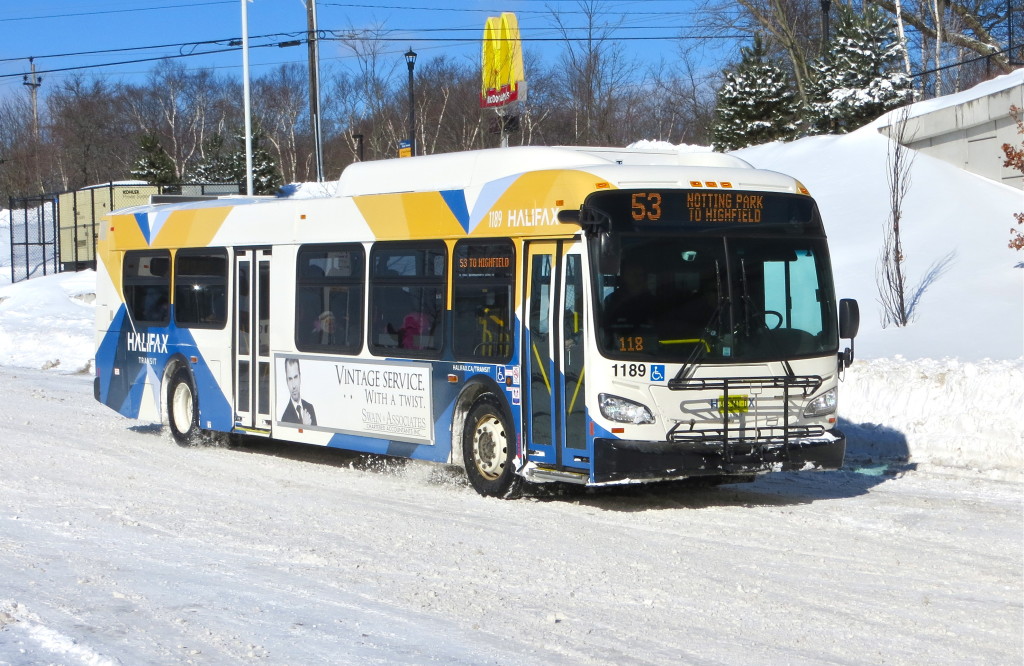
The newly-rebranded Halifax Transit has two major projects in the works. It is in the process of completely redesigning its network of routes and schedules. This has been underway for several months, and a first full draft will begin public consultations on February 19th. The intention was to provide a network built around frequent routes that might require more transfers, rather than once-an-hour or rush-hour-only routes that wound through neighbourhoods. It remains to be seen what the transit agency will actually propose.
Secondly, Halifax Transit will be receiving its new, fourth, harbour ferry this summer. It will be very similar in design to the current fleet, but will be intended to double frequency to/from the Woodside ferry terminal. The ferry will be named for a figure from Halifax’s history, with voting on the name conducted up until the end of January (results not yet available at press time).
At Transit Cape Breton, the implementation of service reductions announced earlier as a cost-cutting measure will be delayed. It will probably now be May before the new schedules take effect, to allow more time for the complicated process of developing a schedule reduced by 200 hours per week without causing too many problems for riders.
The agency also expects to take delivery of a new 30-foot Vicinity bus in May. The $290,000 vehicle is being built by Grande West Transportation Group of Vancouver. The manufacturer’s website claims this model sells for half the price of a typical 40-foot transit bus, while offering greater fuel economy, reduced emissions, and lower maintenance costs. Transit Cape Breton is hoping to purchase one new vehicle each year to update its aging existing fleet. Most current buses have logged more than a million miles, and are increasingly prone to breakdowns. There are also two new handi-trans buses on order, which are expected to be in service sometime this spring.
Fares on Fredericton Transit buses increased to $2.75 cash fare, $80.00 adult monthly pass, and $55.00 for student passes, effective January 2 – the second hike in less than six months. The annual pass for persons over 65 remains at $50.00, unchanged from the previous year. Students of St Thomas University have a bus pass included as part of their student union membership. UNB students have yet to agree to a similar arrangement, despite the willingness of Fredericton Transit to do so.
Meanwhile, bus service to Silverwood and Lincoln Heights received a partial reprieve. The routes were originally under threat of complete curtailment. The service reduction to two runs in each in the morning and afternoon peaks Monday through Friday was a compromise reached through the efforts of Councillor Scott McConaghy. There is no Saturday service on those routes. The changes were made too late for the publication of the fall transit schedule which did not show either route. This was corrected in the January 2015 printed schedule.
On other routes, the Carlisle service is half hourly through most of the day during the week, except Saturday when it reverts to hourly. Other routes are half hourly at the morning and evening peaks on weekdays and hourly for the rest of the day. Saturday service is hourly. None of Fredericton Transit’s routes run on Sundays and public holidays.
Saint John Transit services are presently under review. The utility far exceeded the annual budget limits set by the Saint John Common Council, and it will probably be forced to reduce routes and frequencies quite drastically. Low ridership, as a result of previous service reductions and reduced gas prices appears to have created a revenue problem. The COMEX rush hour-only express services to the eastern suburbs, which started with great fanfare a few years ago, have recently suffered a fall in passenger loadings, and this, together with the reluctance of the suburban municipalities to increase their share of funding, will probably result in reductions to the COMEX service frequencies.
Codiac Transpo continues to show slow but steady increases in ridership, but the City of Moncton has decided to engage an advertising agency to develop a marketing strategy and increase public awareness of the service. Codiac – owned by Moncton – also provides service under contract to Dieppe and Riverview. Routes serving Dieppe were beefed up about a year ago, and Riverview is now looking at a redesign of their service, but the Town Council will ultimately have to decide how much service they are prepared to pay for. At least one councillor isn’t convinced the existing arrangement is giving the Town the best bang for its buck. Cecile Cassista suggests it might be worthwhile for Riverview to explore the possibility of operating its own service, using smaller vehicles to interline with Codiac Transpo.
New Brunswick’s new provincial government has agreed to the request of Charlotte County representatives for a meeting regarding proposals for the provision of a public transit service between the county and Saint John. No date has yet been set, but the committee plans to propose a pilot project partly based on the cost savings that the Health and Social Services departments would achieve if their subsidized clients used the bus rather than taxis when travelling to treatment centres and hospitals.
With files from Michael Perry, Ashley Morton and Ted Bartlett




